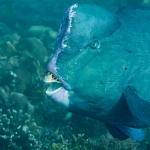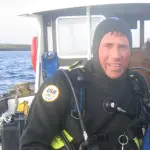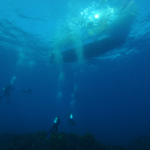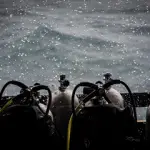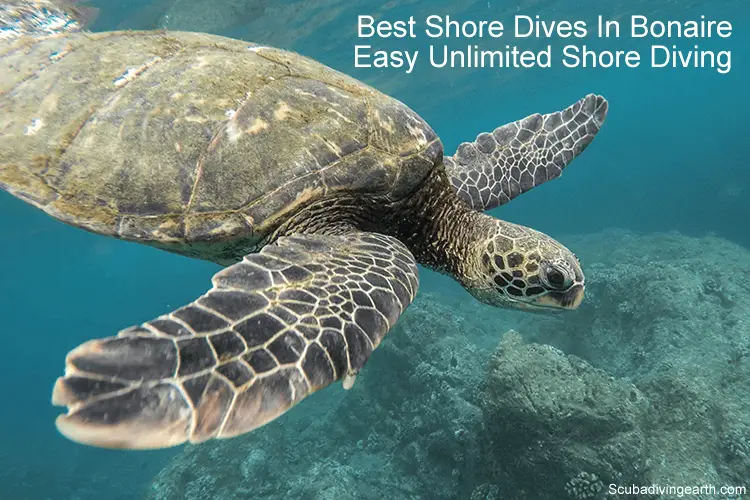
The world’s best shore diving is in Bonaire where you can buy unlimited scuba diving packages
The best shore dives in Bonaire can be enjoyed by experienced and certified scuba divers. Go as a buddy-pair and dive the shore dive sites around this Netherlands Antilles island. Bonaire’s shore dives are so good they have been vote ‘Best Shore Dive Destination‘ by the readers of Scuba Diving Magazine 22 consecutive times!
The best Bonaire shore dives (with dive site numbers):
- 1,000 Steps of Bonaire (Dive site no. 16).
- The Hilma Hooker wreck dive (Dive site no. 43).
- Alice in Wonderland (Dive No. 45).
- Andrea I and II (Dive sites no. 22 and 23).
- Boka Slagbaai Bonaire (dive site no. 6),
- Salt Pier (Dive site no. 49).
- Something Special dive site (Dive site no. 32).
- Karpata Reef (Dive site no. 9).
Read on to find out more about each of the best Bonaire shore dives which includes a video for each dive site.
Bonaire is known for its easy shore diving. You can dive at any time you wish which includes night diving. Simply put the tanks in your hire-truck and drive to your chosen shore dive site and go diving. Probably the cheapest place to dive in the world. Choose from over 60 of the best shore dives.
The best way to do more diving is to book yourself on a scuba diving liveaboard. You can check the latest and best deals on liveaboards using the following window:
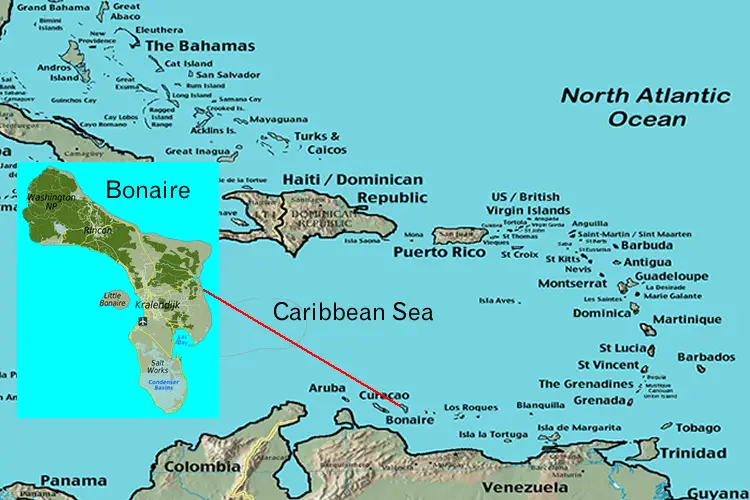
Where is Bonaire located in the Caribbean
Bonaire is a small island located in the southern Caribbean sea. It forms part of the Dutch Antilles Islands, which also includes Aruba. Bonaire is east of the smaller island of Aruba and is about 80 kilometres (50 miles) off the coast of Venezuela.
Apart from the beautiful and easy to get to dive spots, one of the great things about the Dutch Antilles is that it’s rare for hurricanes to reach this far south in the Caribbean. It’s out of the Caribbean’s hurricane belt.
But that’s not to say they don’t hit Bonaire. I remember diving there and discovering the devastation of the last hurricane to hit. It was as if someone had taken a bulldozer to the reef. There was a complete swath of seabed that was devoid of coral reef.
But then I remember also seeing a giant barracuda at this same dive site. As we swam further out the reef system was still in tact.
The best dive sites of Bonaire
With over 60 shore dive sites to choose from, it will be difficult to dive them all on your trip. So here are the best eight Bonaire shore dive sites.
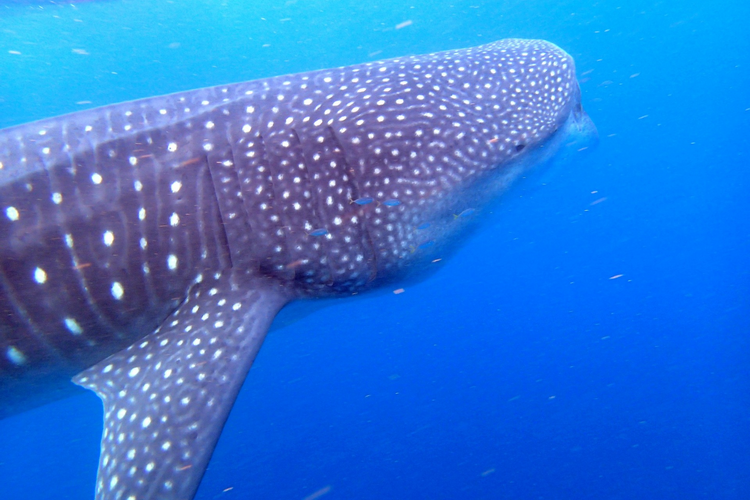
1. 1,000 Steps of Bonaire (Bonaire shore dive site no. 16)
Probably one of the most popular dive sites of Bonaire is the One Thousand Steps dive.
To get to the dive site you’ll need to descend down the steps that lead to the beach. But it’s okay there’s not 1,000 steps down. You are best to kit up at the top of the steps, before walking down to the beach and then into the water.
The depth of this dive site ranges from 6-30 metres (20-100 feet). So as with all the shore dives around Bonaire, you can choose your depth to suit.
Keep your eyes peeled for turtles, eels and there’s even been sightings of whale sharks at this dive site. If you want to dive with whale sharks you should read this article about the best place to scuba dive with whale sharks.
To get an idea of what it’s like to dive the One Thousand Steps dive site, here’s a short video clip:
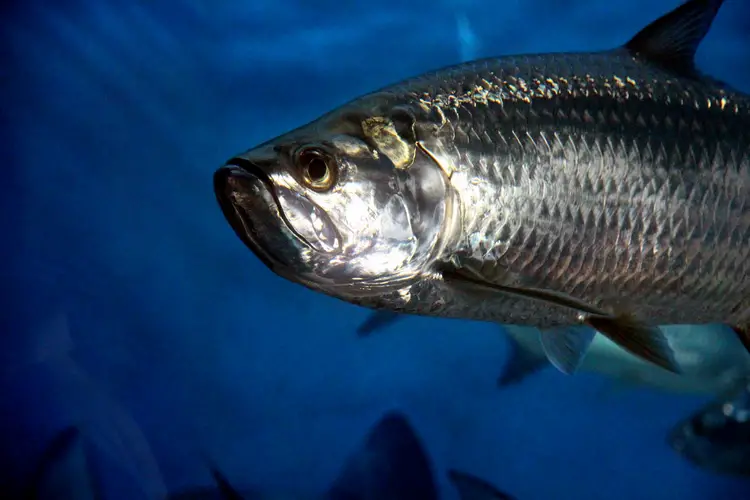
2. The Hilma Hooker wreck dive (Bonaire shore dive site no. 43)
The Hilma Hooker wreck is located near the beginning of the double reef system. You can access this well-liked Bonaire wreck dive from the shore very easily. The dive depth ranges between 18-30 metres (60-100 feet).
You’re likely to see tarpon at the deeper part of the wreck. Many divers mistake these on first glance as sharks.
The Hilma Hooker wreck is a Dutch vessel and sank on 1984 off of Bonaire. It has an interesting history, not least it was used to smuggle marijuana. The wreck is 73 metres (240 feet) in length, which provides wreck diving fanatics an long and interesting dive to enjoy.
For a quick insight into the Hilma Hooker dive site, here’s a short video:
The Hilma Hooker sank off the coast of Bonaire in 1984, and landed on its side in 100ft of water. This is one of my favorite wreck dives. At the end of the dive, Murph, our dive master, shows how to get a manicure from cleaner shrimp.
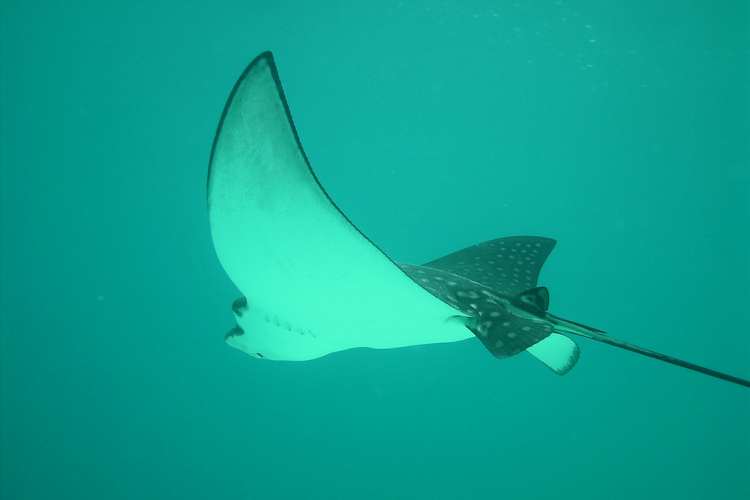
3. Alice in Wonderland (Bonaire shore dive No. 45)
The Alice in Wonderland dive site is one of the dive sites where you’ll experience the double reef. The site is towards the south of the island. The name says it all about this lovely dive site, as Alice in Wonderland is really a wonderland for scuba divers.
The reef is composed of fan-corals, brain-corals, leaf-corals and more. You need to be careful of your depth as you swim between the two reef systems. There’s a sandy bottom between the two reefs and the second reef is not immediately visible.
Normally to find the second reef you’ll need to use your compass to find it. Choose your depth from 10-30 metres (30-100 feet) on this dive.
There’s a chance to see the all the usual coral fish, along with spotted eagle rays, turtles, barracuda, triggerfish and other sea creatures.
For a quick insight into the Alice in Wonderland dive site, here’s a video
Dive site Alice in Wonderland, Bonaire, May

4. Andrea I and II (Bonaire shore dive sites no. 22 and 23)
The Andrea I and II are on the north west coast of Bonaire. These dive sites are next to each other and numbered 22 and 23 on the Bonaire dive map.
If you want to experience huge parrot fish, but also have the chance to spot seahorses, the Andrea I and Andrea II dive sites are a good bet. Additionally, you may see turtles, moray eels and a large array of coral fish.
A great site for beginner scuba divers, as well as for snorkelers too. Choose your depth from a shallow 6 metres (20 feet),through to 30 metres (100 feet).
Video to experience Andre I dive site
Dive site Andrea 1, beautiful dive, with tarpon, barracuda and turtles.
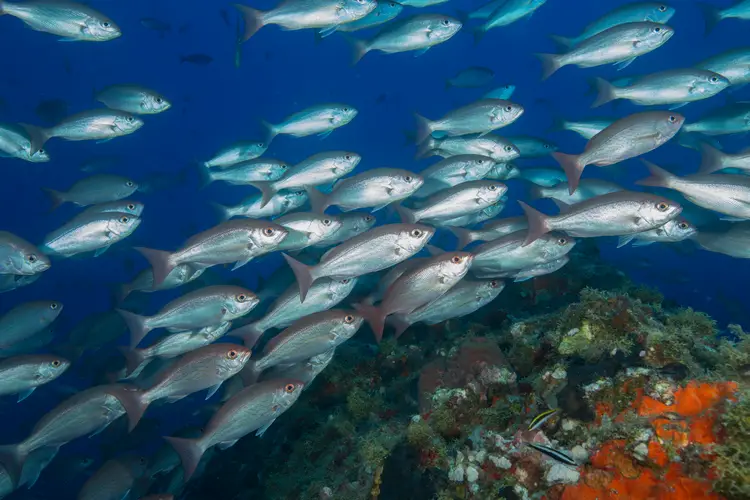
5. Boka Slagbaai Bonaire (Bonaire shore dive site no. 6)
Boka Slagbaai is up in the northern part of Bonaire and is dive number 6 on the map. Boka Slagbaai can be found in Washington Slagbaai National Park.
As you’ll see from the video below there are huge shoals of fish on this shore dive site to enjoy. That’s not to say these shoals will be there every time, but you may be lucky enough to enjoy this experience. But I’ve chosen this one to show how diverse the dives are around Bonaire.
But this dive site is not just about the sea life there. It’s also about the historic remains. This includes ancient cannons, ballast stones together with old anchors and chains.
Boka Slagbaai video experience
While diving in Boka Slagbaai, we came across a shoal and played with it. Here, the video that captured that moment! It is an amazing experience. At some point, we were literally inside the shoal, while fishes circulated around us.
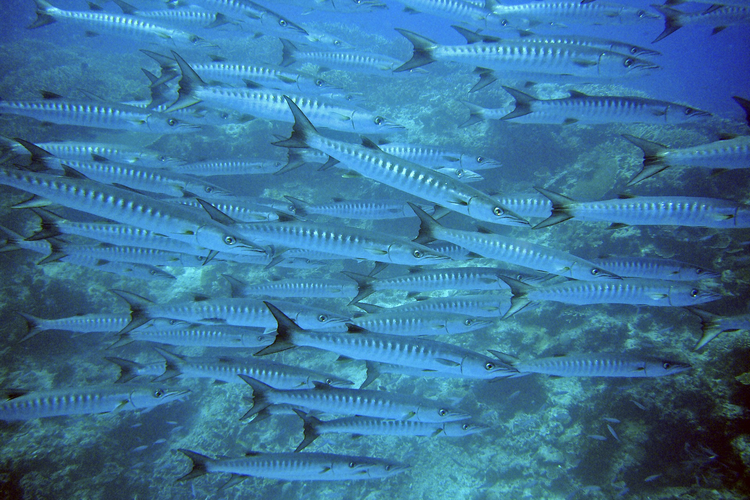
6. Salt Pier (Bonaire shore dive site no. 49)
When you first arrive at Salt Pier you may be disappointed with the scenery on the surface. But don’t be fooled. Around piers you’ll always find a haven of sea life. There’s plenty of fish that find refuge amongst the piles and you’ll also see from the video below there are resident tarpon and barracuda.
This is a great starter dive or for beginner scuba divers, as it’s relatively shallow. The depth ranges from 12 to 21 metres (40-70 feet). If you’re diving this site from the shore, you will require prior permission to do so. Permission can be obtained from one of the Bonaire local dive shops. Ask where you choose to rent your dive tanks from.
Video of Salt Pier dive site
Scuba Diving Bonaire: Salt Pier and Oil Slick Leap. Spectacular dive along the Salt Pier on Bonaire south of Kralendijk
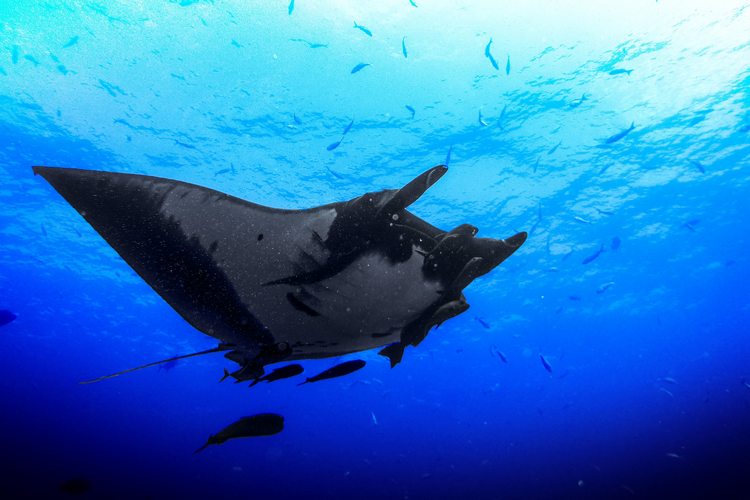
7. Something Special dive site (Bonaire shore dive site no. 32)
The Something Special dive site is recommended as a good night dive site. It’s name “Something Special” is not from the sea life seen here, but was apparently from divers having a very special moment there. I’ll leave that you your imagination.
This is a shore dive site that’s loved by scuba divers and snorkelers alike. But it’s also a good first dive to get your buoyancy right when you first arrive in Bonaire.
Something Special consists of a mixture of hard and soft corals and sandy bottoms. You’ll experience the likes of queenfish, angelfish, seahorses and frogfish. But as you’ll see in the video below, it’s sometimes visited by manta rays too.
That would be something very special to see.
Video of Something Special dive site Bonaire with a manta ray
10 ft. manta ray at the dive site Something Special on Bonaire. Appropriate name for the dive site! Notice all the bubbles. I think members of the Greater Omaha SCUBA Club were a little excited to see the manta ray.
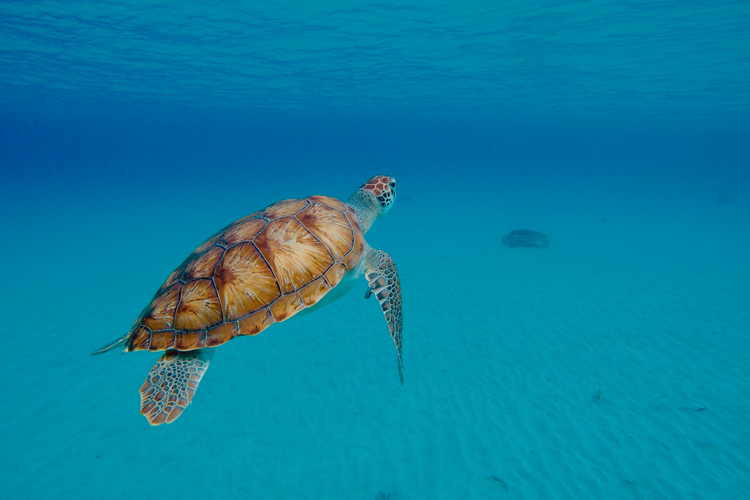
8. Karpata Reef (Dive site no. 9 on the Bonaire shore dive map)
Karpata Reef is the last shore dive site outside the reserve in which diving isn’t permitted. This beautiful reef is just east of the No Dive Zone, and offers some of the more spectacular shore diving on the island of Bonaire.
Karpata Reef is accessed from the end of a one-way section on the coastal road.
This is a beautiful reef with plenty of corals and colour, plus loads of fish life. You’ll see large shoals of blue tangs, as shown in the video below. You’re also likely to see turtles on this dive site feeding on the algae. The dive site is known for its good visibility and panorama views.
I love turtles, and if you do too please take a read about the best place to scuba dive with turtles.
Included within this dive site is the elkhorn coral, which stretches from 3 metres (10 feet) up to the surface. The depth of this dive ranges from 6 to 30 metres (20-100 feet), so it’s ideal for beginners and advanced scuba divers alike.
Video of Karpata reef Bonaire
Video of critters we encountered at Karpata Reef. Cool footage of a Green Turtle coming up for air and then going back into his “hiding” spot.
Bonaire is probably the cheapest Caribbean diving in the world
If you’re looking for cheap scuba diving, then go to Bonaire. But to be able to dive cheaply in Bonaire, you first need to be a certified scuba diver. Plus you need a dive buddy too.
By being a certified scuba diver with a dive buddy, you can take advantage of the many excellent shore dives from the island. There are over 60 dive sites that are accessible from the shore.
There’s no other Caribbean island that has the number of unrestricted shore dive sites. You’ll enjoy the shallow reef swim from the beach, followed by an enjoyment of the steep walls, sloping drop-offs, exciting wrecks and last, but not least, the double reef system.
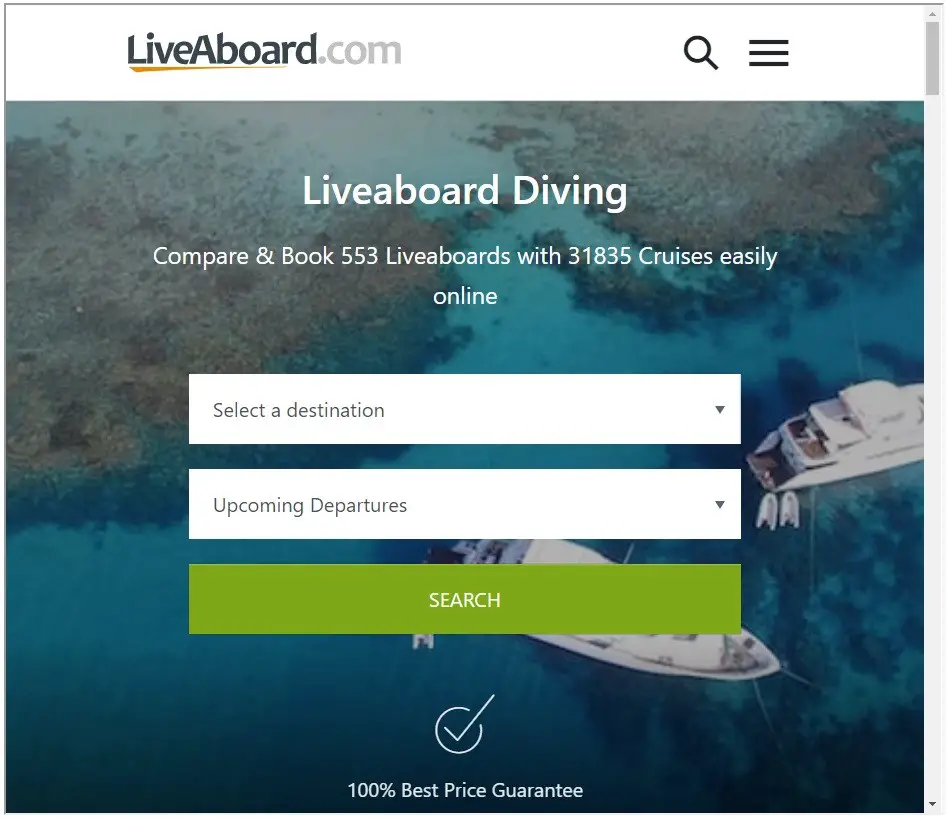
Netherlands Antilles – Unlimited Bonaire shore diving
You can choose between a number of different dive packages. One such package that’s available on Bonaire is the unlimited shore diving package.
With this package, you can dive as much as you like. Simply collect two dive tanks per person at a time. Go to your dive sites and dive, then return to collect more dive tanks, and so on.
More Reading: What are scuba tanks made out of (Steel vs aluminium scuba tanks)
If you don’t want to have an unlimited dive package, you can chose other dive packages to suit. But almost guaranteed, you’ll not find anywhere else in the world where the diving is as cheap. But that doesn’t mean cheap is bad, the scuba diving is incredible.
What you need to shore dive in Bonaire
In order to scuba dive safely in Bonaire, you need the following:
- You must be a certified scuba diver and take your diving certification to show when you hire the dive tanks. That’s not to say you can’t learn to dive in Bonaire, because you can do this too.
- You need to dive with a buddy, so it’s better to travel as a buddy pair. But if you don’t have a buddy, you can sign up to one of the dive shop’s ‘looking for a buddy‘ systems.
- You will need to complete the mandatory Marine Park Orientation. This is to check you are safe to dive and to check your buoyancy control. They need to know you’ll not be damaging the coral reefs because you can’t control your buoyancy.
- You’ll need to purchase a Bonaire Marine Park tag before entering the water
- If you want to dive using Nitrox, bring your Nitrox card with you.
- Hire a vehicle. I’d recommend a pickup truck where you’ll be able to stow your dive tanks between dives.
More Reading: Do empty scuba tanks float? (This depends on the material they are made from)
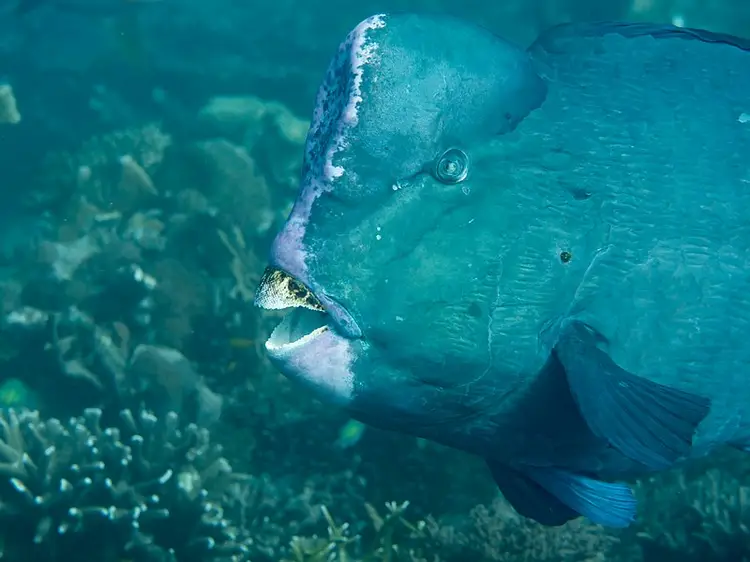
Fish of Bonaire and what you’ll see when scuba diving on Bonaire
The marine life off the shores of Bonaire are both varied and numerous.
The fish and sea life of Bonaire include:
- Turtles, including hawksbill, green and loggerhead.
- Many types of reef fish, including parrot fish and angelfish.
- Eels, including green moray, spotted moray and sharptail eel.
- Tarpon.
- Hammerhead sharks.
- Tiger sharks.
- Octopus.
- Rays, including manta rays, spotted eagle rays, yellow stingrays and southern stingrays.
- Whale sharks if you’re very, very lucky.
- Schooling fish, including various snapper species.
- Drum fish.
- Giant bumphead parrotfish.
- Barracuda, including giant barracudas.
- Black, Goliath, Nassau and coney grouper.
- Trigger fish.
- Trumpet fish.
- Seahorse.
- Lionfish, which are an invasive fish species not endemic to the Caribbean.
I didn’t see any sharks when I visited Bonaire, but they are there to see if you’re lucky. There are even tiger sharks, as shown in the video of Bonaire and Emerald Beach below. There are also hammerheads in the same video from Bonaire.
Take a read of this article about diving with hammerheads from a liveaboard in the Cocos Islands.
Tiger sharks from Bonaire – Diving the ESSO Bonaire
Tigers, lemons and bulls OH MY!!
Bonaire National Marine Park
The Bonaire National Marine Park was established in 1979.
The National Marine Park is world famous for its active management of the island’s marine resources. But it was in 1992 when it became one of the first dive destinations to introduce admission fees for scuba divers.
The park covers an area of 2,700 hectares (6,700 acres) of fringing reefs, seagrasses and mangroves. The park extends from the high water mark to 60 metres (200 feet) of depth into the surrounding Caribbean sea.
The reefs around Bonaire form a narrow fringe around it’s coastline. This reef extends out to a maximum of 300 metres (984 feet) offshore.
For more information about Bonaire National Marine Park, which includes an informative video, please follow this link.
Bonaire recompression chamber
Should you get into difficulty and need a recompression or hyperbaric chamber, Bonaire has one of the Caribbeans best-staffed recompression chambers.
If you come up too fast or have any other similar diving incident where there’s a chance of decompression sickness, the chamber is behind Centro Medical Central.
I hope you enjoyed this article about the best shore dives in Bonaire
I’d love to hear from you. Tell us about your adventures of diving and snorkeling, in the comments below. Please also share your photos. Either from your underwater cameras or videos from your waterproof Gopro’s!
If this article hasn’t answered all of your questions. If you have more questions either about snorkeling or scuba diving (or specifically about the best shore dives in Bonaire), please comment below with your questions.
There will also be many more articles about scuba diving (and snorkeling) for you to read and learn about these fabulous sports.
Have fun and be safe!

